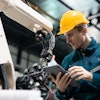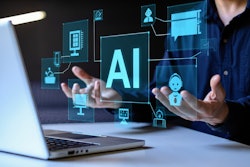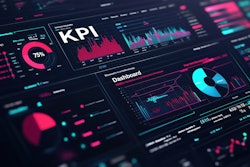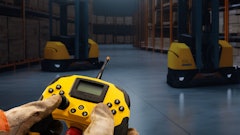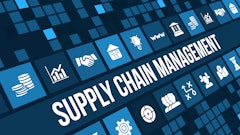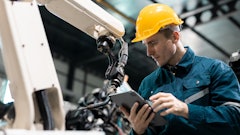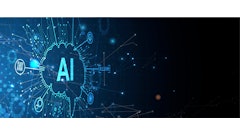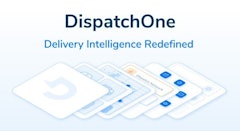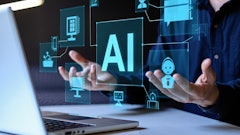
Imagine an autonomous vehicle cruising down a street in San Antonio, Calif. It stops for signs, yields to pedestrians, and turns smoothly, thanks to artificial intelligence (AI) and machine learning. In this controlled environment, the technology performs exceptionally well.
Now, place that same vehicle on a steep, winding road in Vermont during a snowstorm. Trust in the system evaporates. While AI can handle well-marked intersections, current sensor technology struggles with poor visibility, icy conditions, and rapidly changing road surfaces. Until those sensor and processing capabilities advance, performance remains highly dependent on the environment.
This scenario is a useful analogy for AI in supply chain planning. The potential is immense, but key challenges still limit its broad application. Two of the most significant hurdles are: adapting to rapidly changing data and overcoming the “black box” problem.
AI offers great promise in supply chain planning, and there are examples where it is generating results. However, until these significant hurdles are overcome, it is unlikely to be a generally applicable solution for supply chain planning.
Why AI works in some domains and struggles in others
Over the last few years, AI has made significant strides in analyzing massive datasets and identifying patterns. These successes occur in areas with abundant, consistent training data, such as particle physics or traffic sign recognition. Neutrons, for example, behave exactly as they have for billions of years, and stop signs remain largely unchanged for decades.
Supply chains, however, shift constantly. This year, supply volatility surged, rising 22% year-over-year, the highest level since 2022 – driven by shifting consumer preferences, competitive pressures, economic conditions, and weather disruptions. In addition to the speed of change, supply chain data can be sparse, particularly at the SKU level. Few products generate millions of consistent data points for AI training.
Humans can form judgments with far less information. This is why AI research increasingly focuses on learning from smaller datasets, which would also enable faster adaptation as conditions evolve.
The black box problem
The other major barrier is explainability. The “black box” problem predates modern AI. As far back as the 1970s, planning systems could generate solutions through millions of calculations, but with no clear explanation of how the result was derived.
Some trusted those systems initially. But when important customer deliveries were missed, costs rose unnecessarily or production was delayed. Accountability became a major concern. Without transparency, no one was willing to take responsibility, and many simply stopped using the systems.
Modern AI faces the same hurdle. If planners cannot see why a recommendation was made, they are understandably reluctant to act on it, especially when the stakes are high. Research into explainable AI aims to address this, but until more progress is made, the issue remains.
AI as a collaborative partner
Once these two challenges – data volatility and explainability – are addressed, the question becomes: how should AI be integrated into supply chain planning?
Will decisions happen entirely inside the machine, with humans simply trusting the output? Or will there be a collaborative process in which AI proposes options and humans decide which to accept?
History offers guidance. Flight engineers once monitored and adjusted engines during flight. Today, full authority digital engine control (FADEC) systems can handle those tasks automatically. Yet, pilots remain in the cockpit, even though technology exists to fly an aircraft from take-off through touchdown.
Supply chain planning could follow a similar path.
In demand planning, AI could propose assumptions about why the future may differ from the past. Planners might then decide whether to apply all, some, or none of those assumptions. If most recommendations are consistently accepted, automation could increase, leaving only exceptions for manual review.
In supply planning, AI could respond to disruptions by generating a list of possible scenarios, running simulations, and evaluating outcomes. Humans would need to make the final judgment, especially in “least-worst choice” situations, where no painless solution exists. Examples include deciding whether to prioritize certain products over others or determining how much extra cost is acceptable to meet a customer’s needs during a production problem.
The central role of human judgment
Supply chain planning consists of a series of judgments, some small, like forecasting the next 12 months of sales for a single product, and some large, like selecting suppliers for critical components. Many decisions involve weighing trade-offs, where each option carries both risks and benefits.
Full automation has long been an appealing concept, think of the “lights-out” factory, but in most cases, AI is likely to be a decision-support tool rather than a replacement for human expertise.
As AI matures, through improved small-data learning, better explainability, and faster adaptation to change, it will become a more reliable partner for planners. The likely future model is one of collaboration, where AI handles rapid analysis and pattern recognition, and humans bring context, judgment, and accountability.
In complex, fast-changing environments like supply chains, the combination of AI’s speed and human insight may prove to be the most effective approach, rather than the replacement of one by the other.



